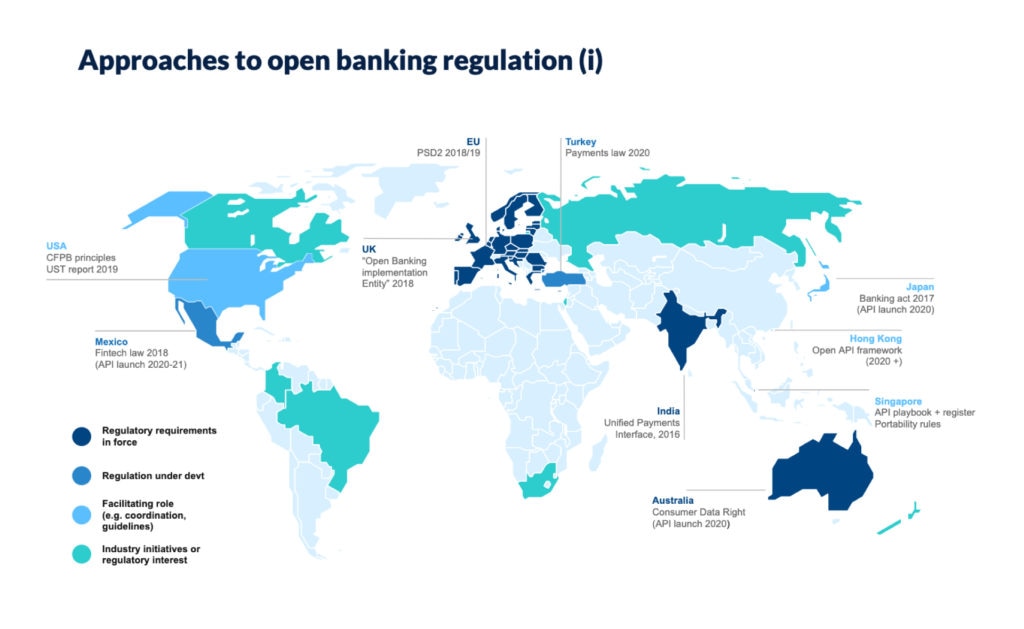
How Tax Policy Influences Investment Decisions: A Beginner’s Guide
Have you ever wondered why some countries seem to attract more businesses and innovation than others? Or why certain types of investments become more popular after a new law is passed? The answer often lies hidden in the intricate world of tax policy.
For beginners, the idea of "tax policy" might sound like a dry, complex topic. But at its core, it’s simply the set of rules a government creates about how it collects money (taxes) from individuals and businesses. These rules, far from being just about balancing budgets, profoundly shape how, where, and why people and companies choose to invest their hard-earned money.
Understanding this link is crucial, whether you’re an aspiring entrepreneur, a budding stock market investor, or just curious about how the economy works. In this long, SEO-friendly article, we’ll break down how tax policy directly impacts investment decisions, making it easy for anyone to grasp.
What Exactly is "Investment"?
Before we dive into taxes, let’s clarify what we mean by "investment." In economics, investment isn’t just about buying stocks. It’s about allocating resources (money, time, effort) today with the expectation of generating a greater return or benefit in the future.
This can take many forms:
- Businesses buying new machinery or building new factories: This is called "capital investment."
- Individuals purchasing stocks, bonds, or real estate: This is "financial investment."
- A company spending money on research and development (R&D): This is "innovation investment."
- People saving money in a bank account or retirement fund: This is a form of "savings investment" that fuels other types of investment.
Every one of these decisions is influenced by the potential after-tax return. If the government takes a large chunk of the potential profit, it makes that investment less attractive.
The Fundamental Link: Risk, Return, and Taxes
At the heart of every investment decision are two key factors: risk and return.
- Risk: The possibility that an investment will lose money or not perform as expected.
- Return: The profit or gain an investor expects to make from an investment.
Investors typically seek the highest possible return for a given level of risk. This is where tax policy steps in. Taxes directly reduce the net or after-tax return on an investment.
Imagine this simple scenario:
You invest $1,000 and it grows to $1,100, a $100 profit.
- If there’s no tax on that profit, your net return is $100.
- If there’s a 20% tax on the profit, the government takes $20, and your net return is $80.
Which scenario makes the investment more appealing? Obviously, the one where you keep more of your profit! This fundamental principle drives how tax policy influences investment decisions.
Key Tax Policy Levers and Their Impact on Investment
Governments have several powerful tax "levers" they can pull to encourage or discourage different types of investment. Let’s explore the most common ones:
1. Corporate Income Tax: A Direct Hit on Business Profits
- What it is: A tax levied on the profits that companies make.
- How it works: Before a company can reinvest its earnings, pay dividends to shareholders, or use profits for expansion, a portion is paid to the government.
- Influence on Investment:
- Lower Corporate Taxes: When corporate tax rates are reduced, companies keep more of their profits. This increased cash flow can be used for:
- Reinvestment: Buying new equipment, expanding operations, hiring more staff.
- Research & Development (R&D): Funding innovation.
- Higher Dividends/Share Buybacks: Making the company’s stock more attractive to investors, encouraging capital inflow.
- Attracting Foreign Investment: Multinational companies might choose to set up operations or invest more heavily in countries with lower corporate tax rates.
- Higher Corporate Taxes: The opposite occurs. Less profit means less money available for reinvestment, potentially discouraging expansion and even leading companies to seek lower-tax jurisdictions.
- Lower Corporate Taxes: When corporate tax rates are reduced, companies keep more of their profits. This increased cash flow can be used for:
Beginner’s Takeaway: Lower corporate taxes generally mean more money for businesses to grow, innovate, and create jobs, making a country more attractive for business investment.
2. Capital Gains Tax: Influencing Buying and Selling Assets
- What it is: A tax on the profit you make when you sell an asset (like stocks, real estate, or a business) for more than you paid for it.
- How it works: If you buy a stock for $100 and sell it for $150, your capital gain is $50. This $50 is subject to capital gains tax.
- Influence on Investment:
- Lower Capital Gains Tax:
- Encourages Investment: Investors are more willing to put money into assets that might appreciate, knowing a larger portion of their profit will be theirs.
- Increases Liquidity: People are less hesitant to sell appreciated assets, which can free up capital for new investments.
- Boosts Entrepreneurship: Founders and early investors in startups know that if their company succeeds and they sell their shares, they’ll keep more of the profit.
- Higher Capital Gains Tax:
- Discourages Investment: Makes speculative investments less attractive.
- "Lock-in Effect": Investors might hold onto assets for longer than financially optimal, just to avoid paying a high tax, reducing market activity.
- Lower Capital Gains Tax:
Beginner’s Takeaway: The lower the tax on selling profitable investments, the more appealing those investments become, potentially leading to more trading and risk-taking.
3. Individual Income Tax: Impacting Savings and Consumer Spending
- What it is: A tax on the income individuals earn from wages, salaries, interest, dividends, etc.
- How it works: A portion of your paycheck or other income is taken by the government.
- Influence on Investment:
- Lower Income Tax:
- Increases Disposable Income: Individuals have more money left after taxes.
- Boosts Savings: More disposable income often leads to higher savings rates, which then become available for investment (e.g., through banks lending money, or individuals investing directly).
- Stimulates Consumer Spending: More money in people’s pockets can lead to increased demand for goods and services, encouraging businesses to expand and invest.
- Higher Income Tax:
- Reduces Savings: Less money available for individuals to save or invest.
- Curbs Consumer Spending: Can slow down economic activity and reduce the incentive for businesses to expand.
- Lower Income Tax:
Beginner’s Takeaway: When people keep more of their earnings, they have more to save or spend, both of which can indirectly fuel investment and economic growth.
4. Depreciation Rules: Incentivizing Capital Expenditure
- What it is: A tax rule that allows businesses to deduct the cost of an asset (like machinery, buildings, or vehicles) over its useful life, rather than all at once when purchased. "Accelerated depreciation" allows larger deductions earlier.
- How it works: Instead of counting the full cost of a new machine as an expense in the year it’s bought, businesses spread that cost over several years. Depreciation reduces a company’s taxable income.
- Influence on Investment:
- Generous Depreciation (e.g., "Bonus Depreciation"):
- Encourages Capital Investment: By allowing businesses to deduct a larger portion of an asset’s cost sooner, it reduces their taxable income in the short term, effectively lowering the true cost of the asset. This makes it more attractive for companies to buy new equipment, build new facilities, or upgrade technology.
- Boosts Productivity: Newer, more efficient machinery can increase a company’s output and competitiveness.
- Generous Depreciation (e.g., "Bonus Depreciation"):
Beginner’s Takeaway: Favorable depreciation rules are like a government "discount" on buying new equipment, making businesses more likely to upgrade and expand.
5. Tax Credits and Deductions: Directing Investment to Specific Areas
- What they are:
- Tax Credit: A direct reduction in the amount of tax you owe (dollar-for-dollar).
- Tax Deduction: A reduction in your taxable income.
- How they work: Governments use these to incentivize specific behaviors or investments they want to encourage.
- Influence on Investment:
- Research & Development (R&D) Tax Credits: Encourages companies to invest in innovation, leading to new products, technologies, and industries.
- Investment Tax Credits (ITC): Historically used to encourage investment in renewable energy (solar, wind) or specific types of manufacturing.
- Deductions for Business Expenses: Reduces the cost of doing business, making it easier for new businesses to start and existing ones to grow.
- Retirement Account Deductions (e.g., 401k, IRA): Encourages individuals to save for retirement, channeling money into investment markets.
Beginner’s Takeaway: Tax credits and deductions are the government’s way of saying, "If you invest in this (e.g., green energy, R&D, your retirement), we’ll give you a tax break!"
6. Estate and Inheritance Taxes: Long-Term Wealth Transfer
- What they are: Taxes levied on the transfer of wealth after someone dies.
- How they work: A portion of a deceased person’s estate (assets like property, investments, cash) is taxed before it’s passed on to heirs.
- Influence on Investment:
- High Estate Taxes: Can lead wealthy individuals to engage in complex estate planning to minimize taxes, sometimes influencing their long-term investment strategies (e.g., investing in assets that are easier to transfer, or setting up trusts). It can also incentivize philanthropic giving.
- Lower/No Estate Taxes: Can encourage the accumulation and retention of family wealth across generations, potentially leading to long-term, stable investment in family businesses or specific asset classes.
Beginner’s Takeaway: These taxes primarily affect very wealthy individuals and can influence how they structure their investments to pass wealth on to future generations.
7. International Tax Rules: Influencing Global Capital Flow
- What they are: Rules governing how multinational companies and individuals are taxed on income earned across different countries. This includes things like tax treaties and rules on repatriating (bringing back) foreign profits.
- How they work: Companies assess the tax implications of operating or investing in different countries.
- Influence on Investment:
- Favorable International Tax Rules: Countries with lower overall tax burdens or attractive tax treaties often become preferred locations for multinational corporations to set up factories, research centers, or even just hold intellectual property. This leads to increased foreign direct investment (FDI).
- Unfavorable Rules: Can discourage companies from investing abroad or encourage them to keep profits offshore, rather than bringing them back to their home country for reinvestment.
Beginner’s Takeaway: Tax rules play a huge role in where multinational companies decide to locate their operations and invest their vast resources.
How Investors and Businesses React to Tax Policy Changes
The specific levers above combine to create an overall tax environment. Investors and businesses react to this environment in various ways:
- Shifting Asset Allocation: If capital gains taxes on stocks are high, investors might favor less taxed assets like municipal bonds. If real estate gets a tax break, more money might flow into property.
- Location Shopping: Businesses might choose to expand in states or countries with lower corporate taxes, more generous R&D credits, or favorable international tax agreements.
- Timing Decisions: Investors might delay selling an asset until capital gains tax rates are lower, or until they qualify for a long-term capital gains rate (which is often lower than short-term).
- Business Formation and Expansion: Lower taxes on profits or easier depreciation rules can encourage new entrepreneurs to start businesses and existing ones to expand.
- Savings vs. Consumption: Individuals might choose to save and invest more if there are tax incentives for retirement accounts or if investment returns are taxed favorably.
- Risk Appetite: Lower taxes on successful investments can make investors more willing to take on higher risks, which is crucial for funding innovative but unproven startups.
The Broader Economic Impact of Tax Policy on Investment
Beyond individual decisions, the collective impact of tax policy on investment has significant ripple effects throughout the economy:
- Economic Growth: Investment is a primary driver of economic growth. When businesses invest in new equipment, technology, and facilities, it boosts productivity, creates jobs, and increases the overall output of goods and services.
- Job Creation: New investments often mean new factories, new offices, and new businesses, all of which require workers.
- Innovation: Tax credits for R&D directly foster innovation, leading to new products, services, and industries that can transform an economy.
- Competitiveness: A country’s tax policy can make it more or less attractive for global businesses and talent, impacting its long-term economic competitiveness.
- Standard of Living: Over time, increased investment leads to a more productive economy, which can translate into higher wages, more affordable goods, and a better quality of life for citizens.
Navigating the Tax-Influenced Investment Landscape
For individuals and businesses, understanding tax policy isn’t just an academic exercise; it’s a practical necessity.
- Stay Informed: Tax laws change. Keeping up-to-date, even at a basic level, can help you make better financial decisions.
- Seek Professional Advice: For complex investment decisions or business planning, consulting a tax advisor or financial planner is invaluable. They can help you understand how current tax laws apply to your specific situation and identify opportunities for tax-efficient investing.
- Consider After-Tax Returns: When evaluating any investment, always consider what your return will look like after taxes. A seemingly high-return investment might be less appealing if it’s heavily taxed.
- Utilize Tax-Advantaged Accounts: Take advantage of accounts like 401(k)s, IRAs, and HSAs (Health Savings Accounts) which offer significant tax benefits to encourage savings and investment.
Conclusion: Taxes – More Than Just a Bill
Tax policy is far more than just a government’s way of collecting revenue. It’s a powerful tool that subtly, yet profoundly, influences every investment decision made by individuals and businesses, both big and small. From the choice to buy a stock, to a company’s decision to build a new factory, the looming shadow (or bright incentive) of taxation plays a critical role.
By understanding how corporate taxes, capital gains taxes, individual income taxes, depreciation rules, and various credits and deductions shape the economic landscape, you gain a deeper appreciation for the forces that drive economic growth, innovation, and job creation. So, the next time you hear about a new tax proposal, remember: it’s not just about money coming in, it’s about influencing where our collective wealth goes, and ultimately, shaping our economic future.



Post Comment